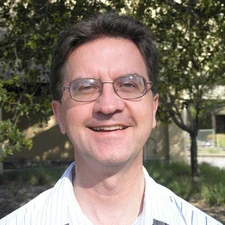Gregory C. Beroza

The 2014 Beno Gutenberg Medal is awarded to Gregory C. Beroza in recognition of his outstanding contributions to earthquake seismology.
Gregory C. Beroza has been a leader in earthquake seismology since 1988, when he (together with Spudich) showed how to invert strong-motion data for the slip space-time function of a finite fault. As a result of an aftershock study of the 1989 Loma Prieta earthquake, Beroza and others found evidence for complete stress drop during the mainshock. He later made similarly interesting discoveries related to other earthquakes, such as Tohoku.
Beroza has developed novel methods for detecting and investigating slow earthquakes, beginning with data from low-frequency free oscillations. When deep, non-volcanic tremors were discovered in subduction zones, they were attributed to hydrothermal fracturing processes distributed over a range of depths. Beroza showed that such tremors actually result from many thousands of small, slow earthquakes occurring as shear slip on deep extensions of seismogenic faults. He also developed a new scaling law for slow earthquakes that unified the observations over a wide range of scales and provided an important key to their unusual physics.
Beroza has made other significant contributions to earthquake physics. He showed that, when corrected for bandwidth limitations, the ratio of radiated energy to seismic moment is independent of earthquake size over 17 orders of seismic moment. Beroza’s results have been supported by more data and recently extended to megathrust earthquakes, with important implications for seismic hazard analysis.
Throughout his career, Beroza has been a dynamic leader of collaborative seismology. He is an admired teacher and has supervised many excellent students, some of whom are now famous seismologists. Beroza has consistently applied his scientific skills to improving our knowledge of earthquakes for the purpose of reducing seismic risk and increasing societal resilience. For these reasons, he is a worthy recipient of the Gutenberg Medal.
